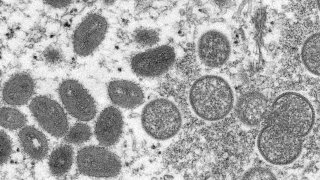
- The WHO said the recent monkeypox outbreaks are unusual because they are occurring in countries where the virus is not endemic.
- More cases will likely be reported in the coming days as surveillance expands, the global health agency said.
- Monkeypox is spread through close contact. It usually begins with flu-like symptoms and then progresses to body rashes.
- It can result in death for 1 in 10 people who contract the disease based on observations in Africa, according to the CDC.
The World Health Organization said that as of Saturday it has confirmed about 92 cases and 28 suspected cases of monkeypox, with recent outbreaks reported in 12 countries where the disease is not typically found, according to the global health agency.
The outbreaks are unusual because they are occurring in countries where the virus is not endemic, according to the WHO. More cases will likely be reported in the coming days as surveillance broadens, it said.
Get Philly local news, weather forecasts, sports and entertainment stories to your inbox. Sign up for NBC Philadelphia newsletters.
"WHO is working with the affected countries and others to expand disease surveillance to find and support people who may be affected, and to provide guidance on how to manage the disease," the agency said in a statement Friday.
European nations have confirmed dozens of cases in the largest outbreak of monkeypox ever on the continent, according to the German military. The U.S. has confirmed at least one case, and Canada has confirmed two. Monkeypox is usually found in Central and West African rainforests where animals that carry the virus live, according to the WHO.
Monkeypox is a disease caused by a virus in the same family as smallpox but is not as severe, according to the Centers for Disease Control and Prevention. However, monkeypox can result in death in as many as 1 in 10 people who contract the disease based on observations in Africa, according to the CDC.
Money Report
The smallpox vaccine is 85% effective at preventing monkeypox based on observational studies in Africa, according to the WHO and the CDC.
Monkeypox is spread through close contact with people, animals or material infected with the virus. It enters the body through broken skin, the respiratory tract, the eyes, nose and mouth. Though human-to-human transmission is believed to occur through respiratory droplets as well, that method requires prolonged face-to-face contact because the droplets cannot travel more than a few feet, according to the CDC.
Monkeypox usually begins with symptoms similar to the flu including fever, headache, muscle aches, chills, exhaustion and swollen lymph nodes, according to the CDC. Within one to three days of the onset of fever, patients develop a rash that begins on the face and spreads to other body parts. The illness usually lasts for about two to four weeks.
"As monkeypox spreads through close contact, the response should focus on the people affected and their close contacts," the WHO said. Health-care workers, household members and sexual partners of people who have the virus are at greater risk of disease.
The CDC confirmed a monkeypox case in Massachusetts on Wednesday. The person had recently traveled to Canada using private transportation. New York City is investigating a possible monkeypox case, according to a health department statement Thursday.
The U.S. had a monkeypox outbreak in 2003, the first outside Africa, which was caused by human contact with infected prairie dogs kept as pets. That outbreak resulted in more than 70 reported cases.






